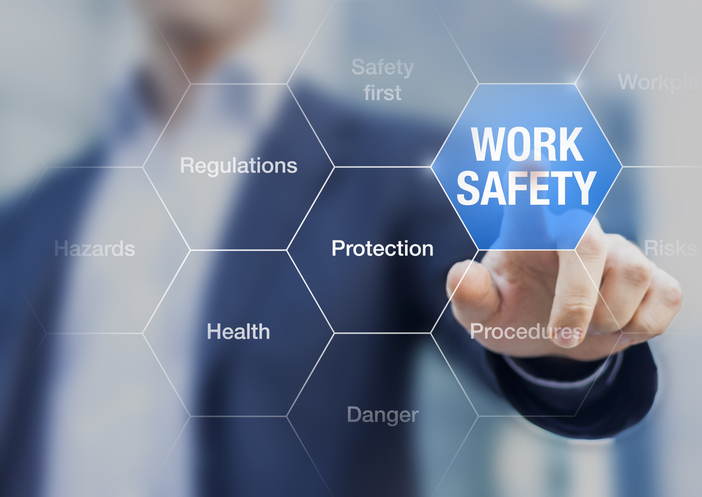Developing a Holistic Framework for Workplace Violence Prevention: Best Practices and Key Factors To Consider for Employers
Work environment physical violence remains a pushing problem for organizations across various markets, requiring a thorough approach to prevention. Creating a holistic framework calls for companies to not only comprehend the ins and outs of work environment physical violence but additionally to evaluate one-of-a-kind threats and vulnerabilities within their atmosphere.
Understanding Office Physical Violence

Furthermore, workplace physical violence is not restricted to certain markets; it can manifest in any type of setting where individuals connect. The influence of office violence prolongs past the immediate injury to individuals; it can lead to decreased staff member morale, increased absence, and significant economic costs for the organization.
To advertise a society of safety and security, it is crucial for companies to apply reliable interaction networks, perform routine training, and establish clear plans concerning office conduct. By comprehending the intricacies of workplace violence, organizations can develop proactive methods targeted at prevention, eventually guaranteeing the well-being of their staff members and fostering a positive job environment.
Assessing Threats and Vulnerabilities
Analyzing susceptabilities and threats is a critical component of a comprehensive workplace violence avoidance strategy. Organizations must initially recognize prospective hazards that can cause terrible events. This entails evaluating different factors, including the nature of the work, employee interactions, and the physical setting. A detailed danger assessment need to encompass both exterior and interior dangers, identifying that physical violence can occur from various sources, consisting of irritated workers, clients, or exterior individuals.
Companies should carry out regular evaluations using an organized approach, such as surveys, meetings, and direct observations. Engaging employees in this process can supply valuable insights, as they may be much more familiar with details vulnerabilities within their workplace. Furthermore, organizations should examine historical information associated with past incidents of office physical violence to identify patterns and locations of issue.

Establishing Avoidance Approaches
After identifying possible risks and vulnerabilities, the next step involves creating reliable prevention methods tailored to the particular needs of the office. A detailed strategy needs to incorporate a combination of policies, ecological design, and worker engagement.
First, employers must develop clear office physical violence avoidance policies that describe unacceptable actions, reporting procedures, and disciplinary activities (california workplace violence prevention). These plans ought to be communicated efficiently to all workers, guaranteeing that every person comprehends their responsibilities and rights
2nd, the physical atmosphere should be analyzed and modified to reduce threats. This can include improving illumination in parking lot, setting up security electronic cameras, and guaranteeing that accessibility factors are checked. Developing safe rooms for employees to get away to in the event of an incident is also important.
Training and Understanding Programs
To effectively mitigate the dangers connected with workplace violence, implementing detailed training and awareness programs is vital. These programs equip workers with the knowledge and skills essential to recognize, stop, and reply to prospective terrible scenarios.
Training must encompass different elements, including the identification of caution signs, understanding the dynamics of dispute, and creating effective interaction strategies. By promoting a society of recognition, employees end up being attentive and empowered to report concerning habits or cases without worry of .
In addition, it is important for training programs to be tailored to the particular requirements of the company and its labor force. Regular workshops, simulations, and role-playing situations can improve understanding and retention of details, making staff members more proficient at handling real-life situations.
Employers should also guarantee that training is not a single event but rather an ongoing process that evolves with the business landscape. Routine refresher training courses and updates on ideal practices will aid receive recognition and enhance the value of a positive method to office safety.
Inevitably, well-structured training and understanding programs work as a foundation for a much safer work environment, producing an environment where staff navigate here members really feel protected and supported.
Tracking and Continuous Improvement
Effective surveillance and constant enhancement are important components of a durable work environment violence avoidance program. Companies need Click This Link to systematically analyze the performance of their treatments and methods to guarantee a secure work environment. This includes gathering and analyzing information related to cases of office violence, staff member feedback, and training end results. Consistently evaluating this information allows companies to recognize trends, review the effectiveness of existing procedures, and make informed decisions around required changes.
Establishing vital performance signs (KPIs) is important for tracking development. These metrics might consist of the variety of cases reported, employee involvement prices in training programs, and general staff member contentment with safety procedures. Performing normal security audits and threat analyses even more enhances the program's efficiency, making it possible for companies to proactively deal with prospective hazards.
Integrating employee input via surveys or emphasis teams cultivates a culture of transparency and encourages continuous discussion about safety and security issues. By focusing on tracking and continual enhancement, employers not only boost the efficacy of their work environment violence prevention programs but likewise show a commitment to staff member well-being. This repetitive procedure inevitably adds to a safer, much more efficient work environment, strengthening the organization's commitment to stop physical violence in the office.
Conclusion

The effect of workplace physical violence extends beyond the prompt injury to individuals; it can lead to lowered staff member morale, raised absence, and substantial financial costs for the organization.
Analyzing vulnerabilities and dangers is a crucial element of a thorough workplace physical violence avoidance approach.Effective tracking and constant improvement are important parts of a durable workplace violence prevention program. By focusing on surveillance and continuous improvement, employers not only improve the efficacy of their workplace violence prevention programs however additionally show a dedication to employee well-being.In conclusion, the establishment of an alternative structure for work environment physical violence avoidance is important for fostering a supportive and risk-free job atmosphere.